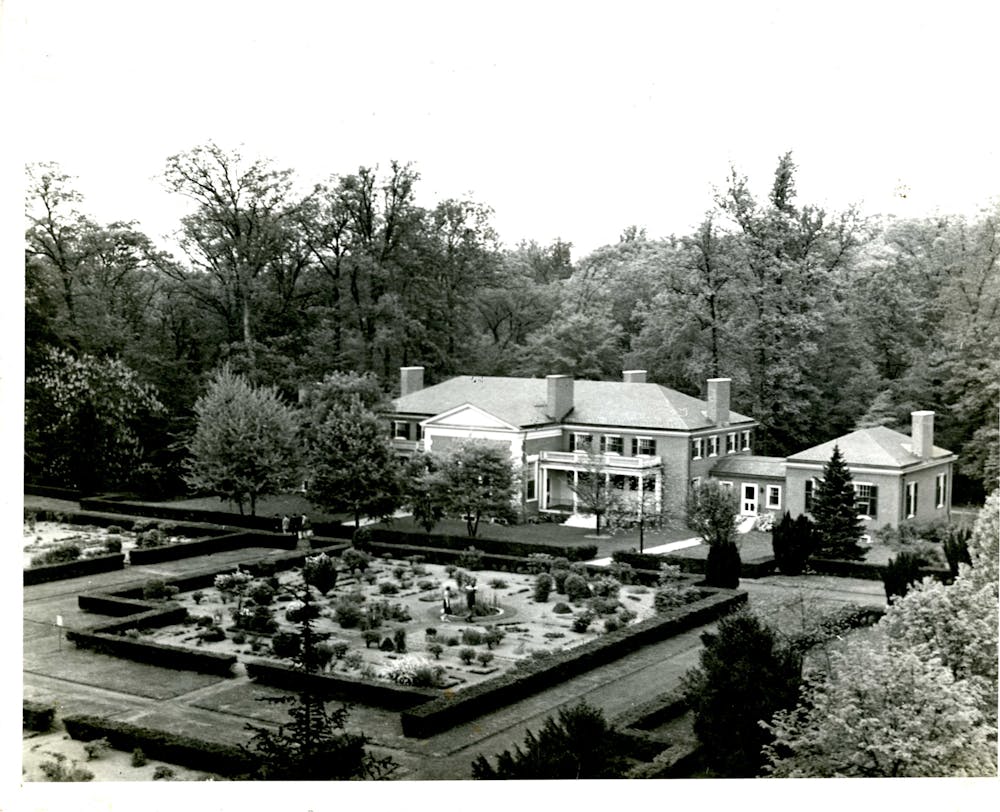The Johns Hopkins Club building, located behind Gilman Hall near Decker Garden, was founded in 1899. It was originally created to foster a more engaged social environment and tighter community for Johns Hopkins Club members, which include Hopkins faculty, alumni and graduate students. The idea was proposed by historian Herbert Baxter Adams during an Alumni Association meeting in February of 1899. The Club was modeled off of similar organizations at other universities, such as the Yale Graduates Club in New Haven.
The Johns Hopkins Club was then organized by several faculty members, alumni and graduate students, proposing $10 annual fees for resident members and $5 annual fees for nonresident members. The Club was officially established in December 1899, with 260 charter members and then-physics professor Joseph Sweetman Ames as its first president. It was initially located at 706 St. Paul Street.
The Club was designed to promote social interaction and community within Hopkins, as specified in its constitution. Its purpose, while gradually evolving over time to include a more diverse membership, has largely remained intact.
In an email to The News-Letter, Christopher Dreisbach, associate director and senior lecturer for the MS in Organizational Leadership program and president of the Johns Hopkins Club, described the Club’s current role in the Hopkins community.
“In recent history, the goal of the Club has been to offer Hopkins faculty, alumni, and friends a pleasant place to meet for food, drinks and special events,” he wrote.
In 1901, the Club struggled to maintain a steady membership and debated dissolving itself entirely due to a lack of outside interest. Some voiced concerns about the fundamental nature of the Hopkins community, arguing that its environment prevented members from socializing with each other. The majority, however, disagreed. When the Club moved to more accessible locations — 516 Park Avenue in 1902 and 227 W. Monument Street in 1905 — membership increased, and these concerns died down.
When the Arts and Sciences division moved to the Homewood Campus in 1916, the Club moved with it, initially occupying Homewood House. However, when the building was converted into a museum in 1929, the Club lacked a building dedicated exclusively to its use. Most of its events took place in Levering Hall, where its members occupied relatively small dining spaces to convene. Thus the construction of a new building or space for the Club and its events was in order — this ultimately came about in 1936.
Prior to the University’s move to Homewood Campus, Theodore Marburg, a Baltimore diplomat and University trustee, alongside his siblings Amelia and William Marburg, had established the Charles L. Marburg fund, an endowment fund of $50,000 which was to remain intact until it could be applied to the creation of a building named after their late brother.
In 1936, Theodore and Amelia Marburg, in an effort to honor their late siblings, William and Charles, directed the fund toward the creation of a building for the Johns Hopkins Club. The Marburgs provided the rest of the funds not already included in the Charles L. Marburg fund to construct the building.
The Johns Hopkins Club building was constructed in its current location — behind Gilman Hall, near Decker Garden. Designed by Wrenn, Lewis and Jencks, the building was inspired by Homewood House in its style and architecture. The blueprint below reveals the intended location and plans for the construction of the buildings.

Over the course of the Club’s history, it has expanded both its presence in the Hopkins community and its diversity in membership. In his interview, Dreisbach discussed the gradual transition of the Club to achieve a more inclusive membership.
“Originally the Club was for male faculty members,” he wrote. “Over time it admitted female faculty members and opened membership to alumni, students 21 years old and older, and friends of Hopkins.”
The building has since undergone several renovations in later decades, including improvements and additions to kitchen facilities and dining spaces in order to accommodate more faculty Club members. These occurred separately in the mid-1950s and 1980s.
In light of the upcoming renovation of the Milton S. Eisenhower Library and the delayed construction of the Student Center, the University has attempted to open and expand study spaces around campus. Driesbach described the implications this will have on the future of the Johns Hopkins Club building.
“The gathering spot—the Club building—has been taken offline temporarily given the need for major renovations,” he wrote. “President Daniels told me that the study spaces in the Club building would be temporary and would not affect the eventual renovation of the building or the Club's opportunity to be a tenant in the building once it has re-opened.”





